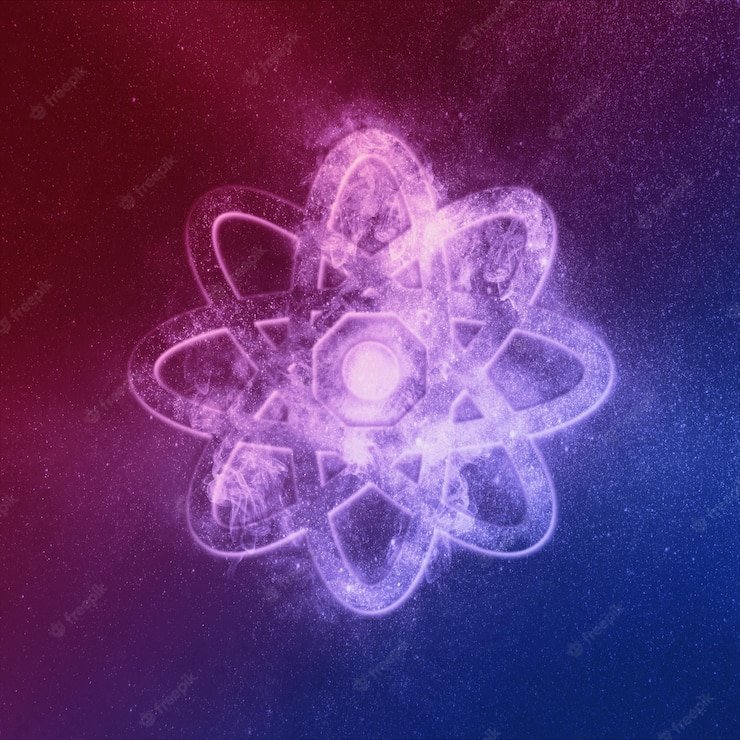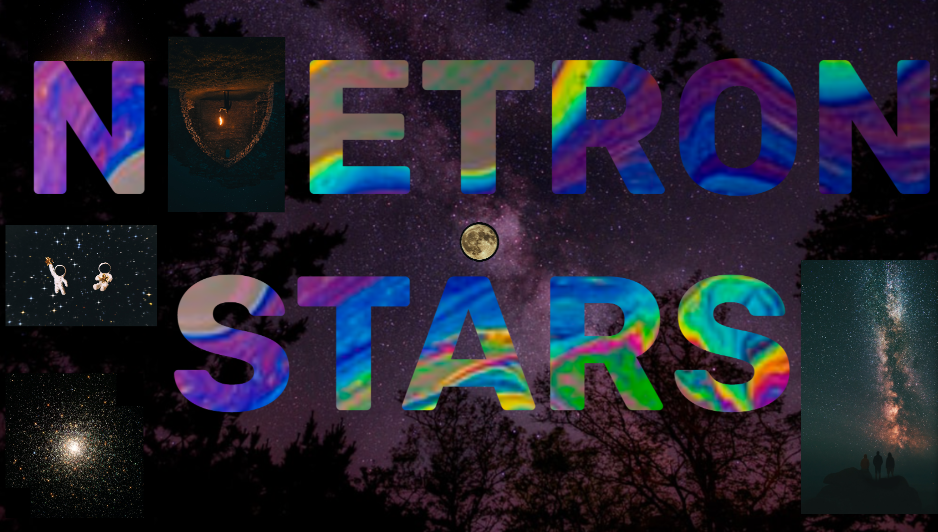NEUTRON STARS

WHAT IS A NEUTRON STAR?

A neutron star is an extreme dead star, put simply. A normal star’s gigantic mass creates a powerful gravitational field which pulls toward gas towards the centre of the star. Meanwhile the core produces energy to prevent the gas from gathering too close to the centre and leading to a catastrophic event (death of star). Also, when the star becomes too old, it’s core doesn’t have enough energy to keep the reactions going and thus all the reaction in the nucleus of the star cease. Therefore, the outer layer tries to collapse the inner core but the core prevents that and makes it bounce back. The core, meanwhile, is incredibly dense due to which only the core of the star remains, rest everything explodes. So, the nucleus is now becoming a supernova but the core is still collapsing.
Then, the pressure becomes so high that electrons and protons inside the nucleus end up MELTING into each other! SO, now we have 90% of neutrons in the superdense mass! Now, we cannot squish the mass any tighter!
Thereafter, energy goes away and we obtain a neutron star. Scientists speculate that it isn’t that big of a star, it’s just about the length of a normal city,
Now, even though the size is very low on an astronomical scale, it is so dense, that even in such a small size, it’s mass is 2 and a half times heavier than the Sun of our solar system. (just don’t even imagine we inhabiting a neutron star).
It has an outer crust, inner crust, an atmosphere made of Hydrogen, Helium and Carbon, an outer core and lastly, an inner core.
Just if it were a little bit more dense, it would turn into a black hole…
SOME FACTS ABOUT IT…

- It spins on it’s axis so fast that the rotational speed of the neutron star was holding the entire star together!
If it wasn’t spinning that fast, then it would have not been able to keep everything it had together! - Scientists got a chance to observe it through the gravitational waves emitted by the collision of two neutron stars, the neutron star formed after the collision turned into a black hole milliseconds after it’s explosion but still scientists were able to observe it to a large extent.
- It is very small compared to average stars. On an average, it is 21 km in diameter.
- Larger neutron stars are able to survive longer without collapsing compared to the smaller ones.
- If life was possible on a neutron star, it’d be two-dimensional because the gravitational pull is enough to flatten anything on it’s surface.
- Their magnetic field can be billions of times stronger than that of Earth!
- The temperature there can go up to 60,000°C.
- Their spinning speed is up to 60 spins per second!
- When they get hold of some stray matter, they suck it (like a sponge). While doing so, they spin at a rate of 100 spins per second!
- It is formed when protons and electrons fuse into neutrons, forming a frictionless liquid (known as a superfluid), and it is surrounded by a crust.
- The fastest neutron star spins at upto 700 spins per second!
- They have the strongest magnetic field of any object known to us.
- The explosion of neutron stars (as explained in point 2), was the most studied event in the history of astronomy.
- The collision of two neutron stars can distort space time too! A single neutron star distorts space-time around it. (gravity causes space-time to distort) (space time is time interconnected with space) (everything affects space time, giving rise to gravity)
- If you were to move at the speed of light; time would slow down for you!
- A black hole would gobble up the neutron star just like it does for other stars…
TYPES OF NEUTRON STARS

There are 3 types of neutron stars:-
- Magnetar- It’s gravitational field is about 1000 times stronger than a Normal Neutron Star. Only 30 of those have been discovered till date.
- Pulsar- Most of the 3,000 known neutron stars are pulsars. They emit two beams of radiation from their magnetic poles. It appears is if the pulsar’s light is going on and off when observed from space.
- Magnetar+Pulsar- They possess the properties of both Magnetars and Pulsars.
CAN WE MAKE A NEUTRON STAR???

Yes, we can
But that is virtually impossible…
How to do that?
Take a piece of matter (it can be anything; from a paper to a skyscraper!)
Press it, press it, press it until most of the matter is just protons
DON’T STOP !!!
KEEP DOING IT !!!
Now, if you’ve done it successfully, you’ll get plasma in your hands (It’s hot so STAY SAFE)
KEEP PRESSING (just do it.)
Now, you have a ball of neutrons in your hands.
Keep doing this for billions of matters.
You’ll eventually get a neutron star (Earth will not remain unfortunately if this experiment is successful)
Thus, you have successfully made a neutron star at home!


